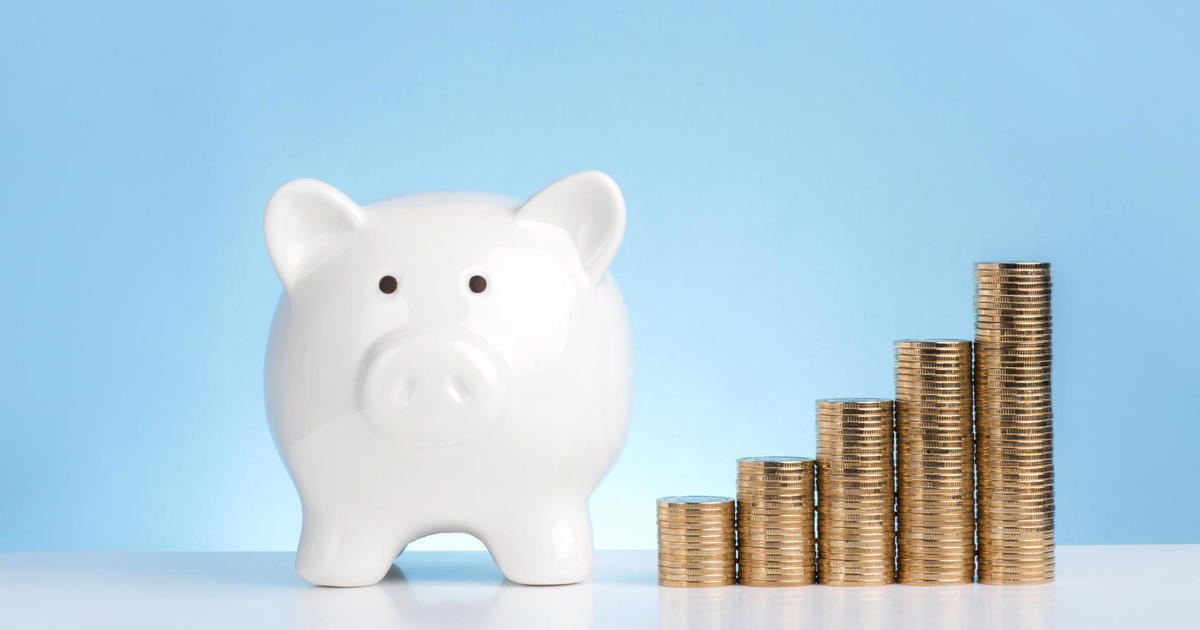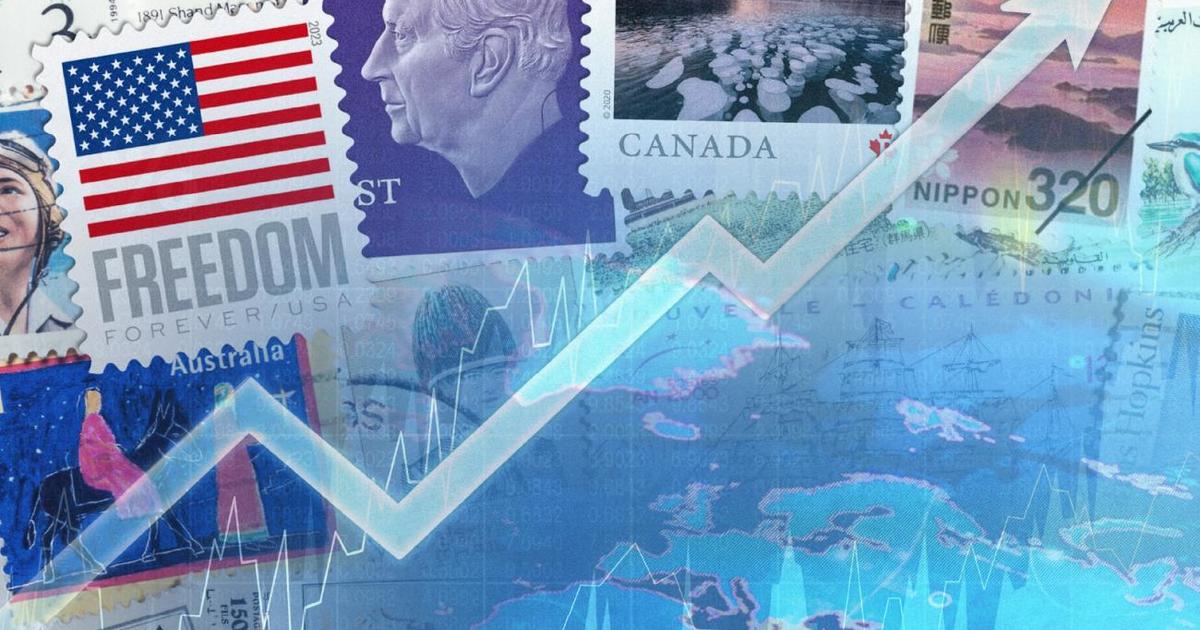Here's what every degree of heat rise could do to the global economy
Even the most promising solutions to climate change often run smack into the challenge of how to pay for them. As the United Nations' COP26 summit kicks off in Scotland on Sunday, questions about whether poorer countries can afford to reduce their emissions for the global good and whether richer countries — which account for the vast majority of the world's carbon emissions — are doing enough to help them are expected to take center stage.
Yet the cost of fighting climate change must be weighed against the staggering economic toll of losing the war. Indeed, the financial damage from runaway climate change could surpass the amount of money that currently exists on the planet, according to one estimate.
Today, global warming had already reduced U.S. economic output by about 1% — or $200 billion, according to a study published in 2017 in the journal Science. But as the mercury rises, the costs increase exponentially. If the global temperature reaches 4 degrees Celsius by 2100 — described by experts as a catastrophic scenario — the costs per degree would soar by a factor of four, the same study predicts. In other words, if the world continues on its current trajectory to reach 4 degrees of warming, that change could cause 10 times the economic damage.
In that future world, climate damage would lead to nearly $1 trillion in costs by the end of the century, said Amir Jina, an environmental economist at the University of Chicago and one of the authors of the Science paper, calling it "a worst-case scenario." Other research puts the price tag even higher, with the U.S. potentially losing $2 trillion in growth by 2100 if greenhouse gases soar.
As experts try to quantify the economic costs of large-scale planetary destruction, more Americans are waking up to the risks. Almost two-thirds now think addressing climate change should be a top priority, the Pew Research Center found in May, and a majority of the U.S. public supports paying for policies that would curb climate change, an AP-NORC poll revealed this month.
Economists are quick to point out the tremendous uncertainty inherent in trying to peer 50 years or 70 years into the future to forecast potential economic trends. To simplify that process, they leave out massive planetary changes, such as large-scale species extinctions, that are beyond our ability to compute, while also generally setting aside predictions on how humanity would react to the extreme floods, storms, drought and migrations that higher temperatures have already begun unleashing on the world.
Yet one lesson consistently emerges through the scientific fog: The current economic fallout from climate change is nothing compared to what the planet faces if temperatures continue to rise.
Here are some of the major economic, environmental and social effects experts say the U.S. and other countries around the world could face at every degree the earth's temperature rises as a result of global warming.
1.1 degrees: Rising inequality, shifting deaths
"As the temperature increases, each extra bit of temperature increase is much worse than the previous temperature increase," said Jina. As carbon concentrations in the atmosphere rise, "things can kind of start to spiral."
At the lower end of the warming scale, including the 1.1 degree increase humans have already caused since the mid-19th century, the distributional effects of climate change vary by region. As crops in Central America fail from heat stress, for example, previously inaccessible tracts of Canadian soil become suitable for farming. Similarly, while coastal real estate takes a hit, sales of air-conditioning units soar. While it is hard to estimate the precise human toll of such shifts on different parts of the globe, in terms of overall economic output the changes may somewhat cancel each other out.
The tracking of climate change-induced human mortality rates has revealed a similar shift, as climate change has already begun to redraw the map of where people die from heat or cold. While severe heat and cold are both hazardous to people's health, record-hot days are rising at twice the rate of record-cold days, according to recent research. That means, at this level of global warming, fewer deaths from record-cold temperatures are likely to temper an increase in deaths from record heat.
"As the United States warms up, as it gets more heat waves, we also get fewer extremely cold days, and so we're losing something which is harming people on the cold side," Jina said. "For a while, across the United States, these two things kind of net out."
Of course, such events are anything but a wash at the level of actual lives. This year alone, hundreds of people died in the Pacific Northwest in extreme heat, while deaths rose after a seemingly freakish Texas ice storm because neither region was equipped to handle the unusual swings in temperature.
"Suddenly you're shifting health from one part of the country to the other. And that's not something you should take lightly," Jina said. "Just because, on net, the answer for the first degree of warming and our research shows that there's very little change in overall mortality, doesn't mean that it's not a really important issue. You're shifting this away from people who currently adapt to that heat to people who probably can't adapt to heat so much."
Predicting how well communities will adapt as the planet gets hotter is difficult because it's hard to know what specific adjustments regions will eventually make to cope with a warming planet, A. Patrick Behrer, a postdoctoral scholar at the Center of Food Security and the Environment at Stanford, previously told CBS MoneyWatch.
"There will be ways in which we're able to adapt and ways in which we're not able to adapt, and it's hard to predict exactly how that's going to play out," Beher said.
1.5 — 2 degrees: Failing crops, failing bodies, bigger storms
Today, people are already shifting food production. French winemakers are moving to southern England, while farmers in North Dakota are swapping out wheat for corn as the climate rises and humidity-sensitive crop yields dwindle. Meanwhile, populations of Alaskan salmon are shrinking as local waters warm.
Yet, while farmers are trying to adapt, future climate changes are likely to lead to major drops in grain production, notably for corn and rice, scientists say, as other areas get even hotter. Under one scenario, the Midwest could lose as much as one-fifth of its corn production in 30 years.
Corn, the most abundant grain in the U.S., falters when temperatures reach about 86 degrees Fahrenheit (30 Celsius). "Where you start to see temperatures exceed that, it really damages those crops. Yields start to decline a little bit each time the temperature exceeds that threshold," Jina said. With "more exposure to more of those days across summer, across a growing season, the yield is going to get hurt even more."
At 2 degrees of global warming, global agriculture yields would drop by an average of 5%, according to research from the University of East Anglia. The ice sheet covering Greenland would also likely melt, eventually boosting sea levels by six to 10 feet, reshaping coastlines around the world.
Extreme weather disasters, which cost the U.S. about $95 billion last year, would become more common and more expensive, scientists say. Climate change slows the movement of hurricanes, making them wetter, more powerful and more destructive.
2 — 2.6 degrees: Poor countries take a beating as productivity and food supplies fall
Given how much carbon humans have already emitted and existing plans for fossil fuel production, the world is likely to warm an additional 2 to 2.6 degrees by 2100 — twice the current trajectory — according to a report by Swiss Re. At a 2.6-degree rise, "The most impacted countries could lose five years' worth of today's economic output," researchers with the insurance giant wrote.
Some 99% of the world's corals would be wiped out by more than 2 degrees of warming, the Intergovernmental Panel on Climate Change project. Entire island nations would disappear.
Fisheries' annual catch would drop by 3 million tons. More than a third of the world's population would see severe heat waves every five years, the IPCC predicts.
More extremely hot days would also mean people wouldn't be able to work as long or as hard as they do now. Human bodies, much like crops, tend to fail above a certain temperature — a particularly threatening factor for so-called frontline workers in agriculture, transportation and manufacturing.
"Somewhere around 90-95 [degrees Fahrenheit], there is this drop off of people's working time. So people just stop working as long hours," Jina said. "When they're at work, people are also getting less productive, even if they're staying at work."
Today, for example, a weekday with temperatures above 86 degrees costs the average U.S. county $20 per person, according to a recent preliminary study.
3.2 — 4.5 degrees: Unprecedented flooding, seas rise by several feet
Flooding becomes more frequent and more extreme at a temperature increase of above 3 degrees beyond pre-industrial levels. With 4.5 degrees of warming, hundred-year floods become 10-year floods. Meanwhile, the associated sea-level rise would affect 290 million people and wipe out one-fifth of global GDP.
"No country is immune to the effects of climate change, and no action is not an option," Swiss Re analysts wrote in an April report. Still, even in an extreme scenario, risks are uneven.
"Many major economies would lose roughly 10% of their GDP in about 30 years' time, while some in southeast Asia could lose roughly half of their GDP in that timeframe," the company found.
At the upper end of predicted global warming, drought becomes ever more severe. With 3.6 degrees of warming, nearly 3 billion people — 40% of the global population — would be exposed to drought, according to the University of East Anglia.
Such a temperature rise would also thaw most of the world's permafrost, leading to structural damage to buildings and roads as the ground underneath them literally shifts, according to the Arctic Institute — and likely forcing communities to relocate, a pattern already under way in Alaska. (Because frozen permafrost contains a great deal of trapped methane, the release of this potent planet-warming gas due to thawing would likely supercharge even more extreme climate change.)
Not only poor countries would feel the pain. Coastal states in the U.S. are at risk of rising seas, with a moderate increase along coastlines costing South Carolina 1.1% of its state GDP every year. Louisiana would lose 1.5% and Florida 3%, according to the 2017 Science study. Those losses would increase with more extreme rises in sea level.
The Biden administration is attuned to the possibility of climate upheaval. A White House report on climate released this month outlined a future in which "some regions lose industries, experiencing unemployment, reduced output, stranded assets, and loss of tax revenue, while others rapidly ramp up, promoting growth and raising prices in the face of competition for resources."
There's still time to change course
But the doom-spiral scenario of economic damage, in which cascading natural disasters deliver an even greater wallop, has a flip side: the clear economic benefit that comes from reducing carbon emissions and adapting infrastructure to a climate-changed future. The faster developed nations move to eliminate carbon pollution, the more costs can be avoided down the line.
"Every fraction of warming that can be prevented will mean lives saved and economic costs reduced," the White House wrote.
With a majority of Americans now coming around to the reality of climate change, this year's congressional actions and the COP26 summit in Glasgow, there is a chance for the U.S. to mitigate the kind of economic devastation climate collapse would bring.
"The eyes of history may see 2021 as a turning point for human-made climate change," James Hansen, the former NASA scientist who brought climate change to popular consciousness in the 1980s, wrote this week.
Investments in clean energy can still "shift the world to a pathway" toward net-zero carbon emissions by 2050, meaning no more carbon dioxide is emitted than can be removed from the atmosphere, Faith Birol, head of the International Energy Agency, recently said.
Such a path is "narrow but still achievable if governments act now," he said.
Christopher Knittel, a professor of applied economics at MIT's Sloan School of Management told CBS MoneyWatch that new technologies may make that shift possible.
"All the technology costs that have fallen — solar, wind, batteries, if we can get nuclear costs to fall — then I see a real way out of this both domestically and internationally. There are exciting developments on the nuclear front."



